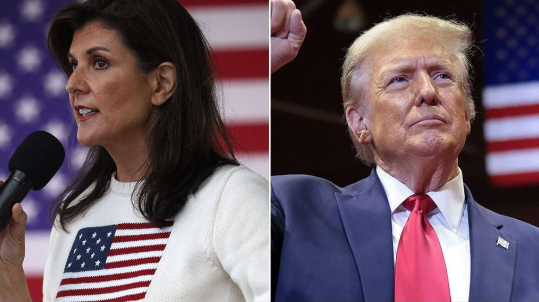To Counter China, Rebuild U.S.-India Relationship-Nikki Haley

In July 1982, President Ronald Reagan welcomed Indian Prime Minister Indira Gandhi to a state dinner at the White House. Toasting the friendship between our "two proud, free peoples," he said: "although our countries may travel separate paths from time to time, our destination remains the same."
Four decades later, the U.S.-India relationship is at a troubling inflection point. To achieve the Trump administration's foreign policy goals—outcompeting China and achieving peace through strength—few objectives are more critical than getting U.S.-India relations back on track.
The last few weeks have seen an explosive series of events. The Trump administration has threatened India with 25 percent tariffs for purchasing Russian oil, on top of the 25 percent President Donald Trump already slapped on Indian goods. These developments followed months of rising tension, including over the U.S. role in India-Pakistan ceasefire negotiations.
Trump is right to target India's massive Russian oil purchases, which are helping to fund Vladimir Putin's brutal war against Ukraine. India has also traditionally been among the most protectionist economies in the world, with an average tariff rate more than five times the U.S. average in 2023.
But India must be treated like the prized free and democratic partner that it is—not an adversary like China, which has thus far avoided sanctions for its Russian oil purchases, despite being one of Moscow's largest customers. If that disparity does not demand a closer look at U.S.-India relations, the realities of hard power should. Scuttling 25 years of momentum with the only country that can serve as a counterweight to Chinese dominance in Asia would be a strategic disaster.
In the short term, India is essential in helping the United States move its critical supply chains away from China. While the Trump administration works to bring manufacturing back to our shores, India stands alone in its potential to manufacture at China-like scale for products that can't be quickly or efficiently produced here, like textiles, inexpensive phones, and solar panels.
When it comes to defense, India's expanding military ties with the United States, Israel, and other American allies make it a crucial asset to the free world's security, and a rapidly growing market for U.S. defense equipment and cooperation. India's growing clout and security involvement in the Middle East could prove essential in helping to stabilize the region as America seeks to send fewer troops and dollars there. And India's location at the center of China's vital trade and energy flows could complicate Beijing's options in the case of a major conflict.
In the longer term, India's significance is even more profound. Home to more than a sixth of humanity, India surpassed China as the world's most populous country in 2023, with a young workforce that contrasts with China's aging one. It is the world's fastest-growing major economy—soon to eclipse Japan as the world's fourth largest. India's rise represents the most significant geopolitical event since China's, and is among the greatest obstacles to China's goal of reshaping the global order. Simply put, China's ambitions will have to shrink as India's power grows.